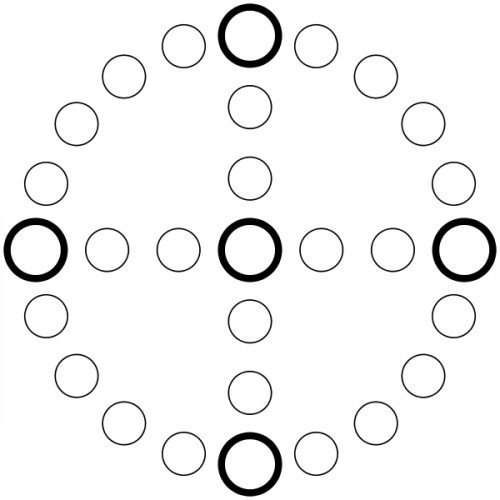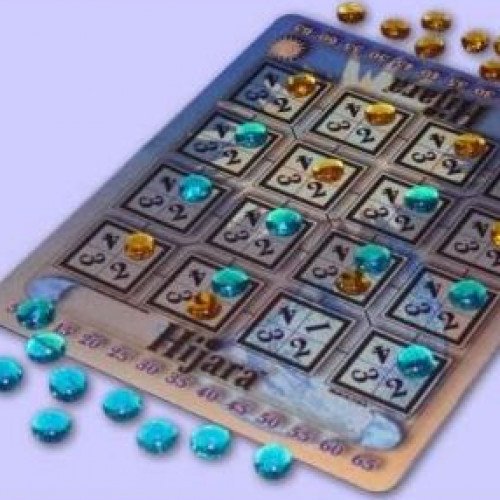CROSS AND CIRCLE GAME VS HIJARA

CROSS AND CIRCLE GAME
Cross and circle is a board game design used for race games played throughout the world. The basic design comprises a circle divided into four equal portions by a cross inscribed inside it like four spokes in a wheel; the classic example of this design is Yut. However, the term "cross and circle game" is also applied to boards that replace the circle with a square, and cruciform boards that collapse the circle onto the cross; all three types are topologically equivalent. Ludo and Parcheesi (both descendants of Pachisi) are examples of frequently played cruciform games. The category may also be expanded to include circular or square boards without a cross which are nevertheless quartered (Zohn Ahl), and boards that have more than four spokes (Aggravation, Trivial Pursuit). The game board for the Aztec game Patolli consists of a collapsed circle without an interior cross and thus has the distinction of being a cross that is a circle (topologically), without being a cross plus circle. Tokens are moved around spaces drawn on the circle and on the cross, with the goal of being the first player to move all tokens all the way around the board. Generally the circle of the cross and circle forms the primary circuit followed by the players' pieces. The function of the cross is more variable; for example, in Yut the cross forms shortcuts to the finish, whereas in Pachisi the four spokes are used as player-specific exits and entrances to the pieces' home. In non-race games (like Coppit and Trivial Pursuit) all paths may be undifferentiated in function.
Statistics for this Xoptio

HIJARA
Hijara is a two-player abstract strategy board game played with small stones. It has been likened to a three-dimensional game on a two-dimensional board. The game was designed by Martin H. Samue| and first printed, as Excel, by American Airlines in their inflight magazine, American Way, on December 24, 1985 and July 22, 1986. It has been sold commercially as Eclipse in 1994, and Hijara (the Arabic word for small stones) in 1995, 2003 and 2006. The original commercial edition of Hijara has a game board of 16 squares, divided into 4 sections numbered 1 through 4 and a score-keeping "ladder" on either end. Players choose either yellow or blue and use 32 same-color stones plus one score-keeper each. Blue starts and players take turns placing their stones, one at a time, on any square, building on those already on the board, to complete and block point-scoring combinations. When a player places a stone on a square, it must be placed in the lowest-numbered open section in that square. So, for every square, the first small stone must be placed on the 1, second on the 2, etc. The game starts with an empty board, and ends with a full board with 3 ways to score points when placement of four same-color stones is completed in any of the following combinations: 10 points - 4 stones of the same color on 4 numbers of a kind in a row - horizontally, vertically, or diagonally. 15 points - 4 stones of the same color in numerical sequence (i.e. 1-2-3-4) - horizontally, vertically, or diagonally. 20 points - 4 stones of the same color in one square. Points are won with a player's own-color stones and are always accrued, never deducted. Several point-scoring combinations may be completed at one time with a single stone. Overlooked points are forfeited and, throughout the game, players keep score on their side of the board with an extra stone of their color. The game is over when the last small stone is placed and all the numbers are covered then, by comparing accrued points totals, the player with the greater number of points is the winner of the game.